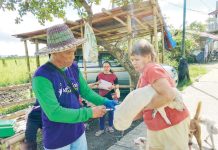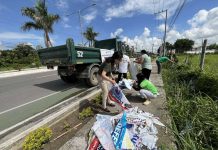ILOILO – With just 65.82% of its target reached, the Department of Health (DOH) is ramping up efforts to vaccinate more Western Visayas children, pregnant women, and senior citizens as it works toward achieving full immunization coverage across the region.
Data from DOH Region 6 show that 160,897 children aged zero to 12 months and school-aged learners in Grades 1 and 7 have received routine vaccinations as of 2024. However, the agency admits this still falls short of its ideal 100 percent coverage, prompting the implementation of intensified strategies like the Reaching Every Purok (REP) approach.
Infants in the zero to 12 months age group were administered a range of vaccines, including Bacillus Calmette-Guérin (BCG) for tuberculosis, Hepatitis B, the Pentavalent vaccine (covering five diseases), Oral Polio Vaccine (OPV), Inactivated Polio Vaccine (IPV), and the MMR vaccine (Measles, Mumps, Rubella).
Grade 1 and Grade 7 students received Measles-Rubella and Tetanus-Diphtheria (MRTd) vaccines, while Grade 4 learners were targeted for Human Papillomavirus (HPV) vaccination to prevent cervical cancer.
Vaccinations extended beyond children. Pregnant women received Tetanus-Diphtheria (Td) shots for maternal and neonatal protection, and senior citizens were administered influenza and pneumococcal vaccines to guard against flu and pneumonia.
“Vaccines are safe, cost-effective, and scientifically proven ways to protect individuals and communities from infectious diseases,” said Dr. Jose Martin Atienza, Medical Officer III for the DOH’s National Immunization Program in Western Visayas.
The agency emphasized that vaccination not only saves lives but also builds herd immunity, helping to protect vulnerable populations. Moving forward, the DOH will focus on enhanced program management, health promotion, cold chain improvements, and tighter surveillance to meet its immunization targets.
The National Immunization Program aims to reduce child mortality and disease outbreaks by scaling up vaccine access and community engagement — especially in underserved and geographically isolated areas./PN





